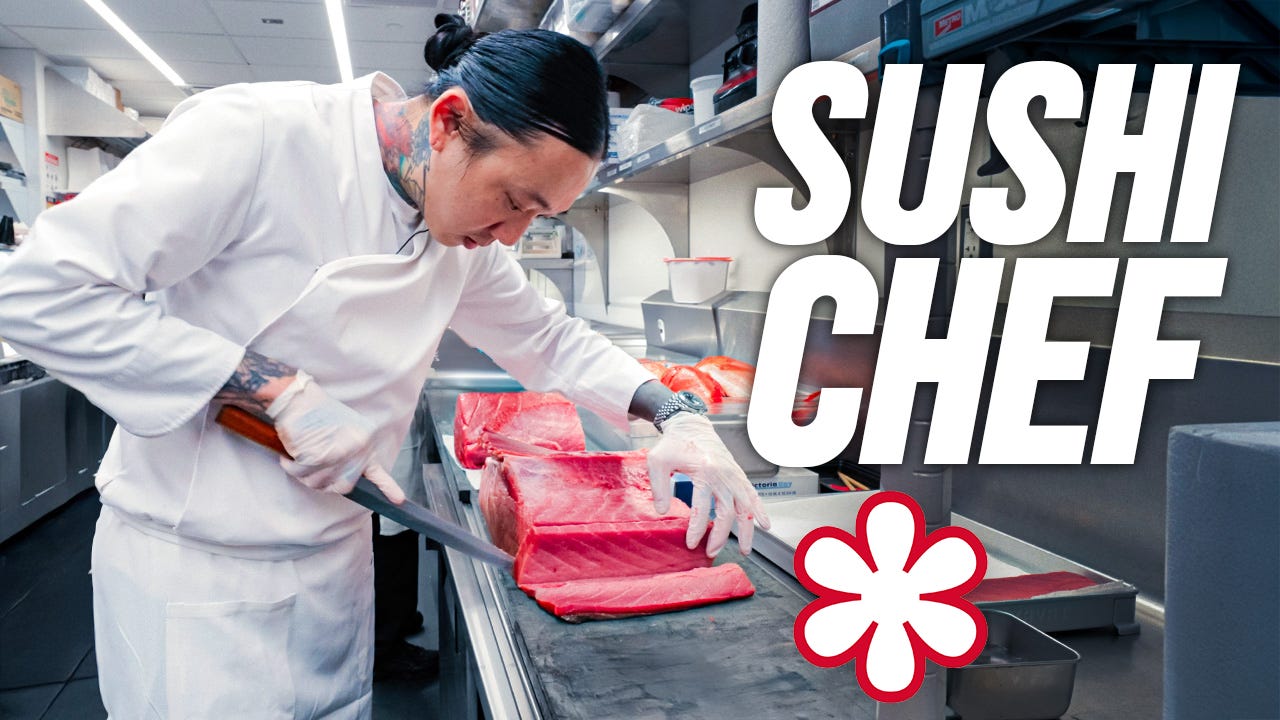Review: Jōji, 1 Michelin Omakase in NYC [Free]
Hey S3 Family!
Hope everyone has had a wonderful week, so far!
As you may know, we recently had the chance to revisit one of our favorite restaurants—and somehow, the meal was even better than we remembered.
Just a recap, Jōji is a one-Michelin-star omakase restaurant tucked away in Grand Central Station in New York City. It’s led by Chefs Wayne Cheng and George Ruan, both alumni of the legendary three-Michelin-starred MASA. Jōji blends precision and polish with refined sense of warmth, all within one of the most unexpected (and iconic) locations in Manhattan.
We actually filmed a video at Jōji on our YouTube page back when they first opened… and if you haven’t seen, don’t try to look for it… 😅 That was back when our vocabulary mainly consisted of “wow…” “I can’t even…” and “yum…” Saying that, has it honestly evolved much today? Who knows… haha.
Fast forward two years, and Jōji still left us speechless in the best way. This time, instead of just doing one of our usual dinner “experience” videos (they’re not really reviews—we save that here on Substack), we did something a little different: we spent the day with Chef & Partner Wayne Cheng, to see what it really takes to run a high-level sushi counter like Jōji.
From breaking down tuna to prepping sushi rice and tasting uni—if you’re curious what happens before the guests sit down, it’s all in the episode on our YouTube now.
And for everyone here, we wanted to share our free review. Not as long or detailed as our usual ones, but definitely our real thoughts, broken down by category:
Atmosphere – 9/10
Tucked under a staircase inside Grand Central Station, Jōji is hidden in plain sight. There’s no big flashy signage—just a pathway with stones and plants that quietly sets the tone.
You enter through a dark, moody hostess room, then are guided into the main restaurant—a striking omakase counter that feels like you’ve stumbled into NYC’s best-kept secret. It’s luxurious yet low-key. Removed from the chaos outside.
As the evening goes on, the energy slowly builds. The music picks up. Conversations deepen. It’s a space that transitions beautifully from quiet elegance to lively camaraderie.
Design – 9/10
The entire space orbits around the omakase table, which was crafted from a single tree—literally. Which they sand down twice a day before service. They used that same tree to make the cutting boards, wooden boxes for the fish, and other subtle details throughout.
The dark backdrop behind the chefs makes the table pop, illuminated by focused spotlights that almost give it a stage-like presence. It’s clear: this is the show.
Even the chairs are worth a mention—big, plush, and comfortable enough to keep you upright and happy for a multi-course feast.
Food – 28/30
The meal kicks off with six starters before moving into nigiri, and we have to say—almost every bite felt better than we remembered with many new ones in the mix.
Highlights:
Akaebi Toast: Sweet, raw shrimp on toast. We personally wanted a little sauce or something for balance (felt mildly dry) but we imagine the restraint was intentional—letting the shrimp’s natural sweetness shine.
Toro with Onion & Ponzu: This was a wow bite. The “saitoro” cut (under the fin) had an incredible texture, with a sweet onion sauce and crunchy cucumber and chives. Simple, but vibrant.


Kegani & Uni (Add-On): Not included in the standard menu, but worth every penny. Luxurious, sweet and decadent crab and uni and fresh cucumber dressing, a dish we never forget!
Steamed Hata & Caviar: Set in a deep, umami-rich dashi with crunchy garlic shoots and meaty piece of perfectly steamed fish. So comforting.


Grilled Kinki with Burnt Onion Purée: Moist, incredibly crispy skin, and that sauce—caramelized, deep, sweet… perfection.
Wagyu Sando: No explanation needed. It’s as decadent as it should be!
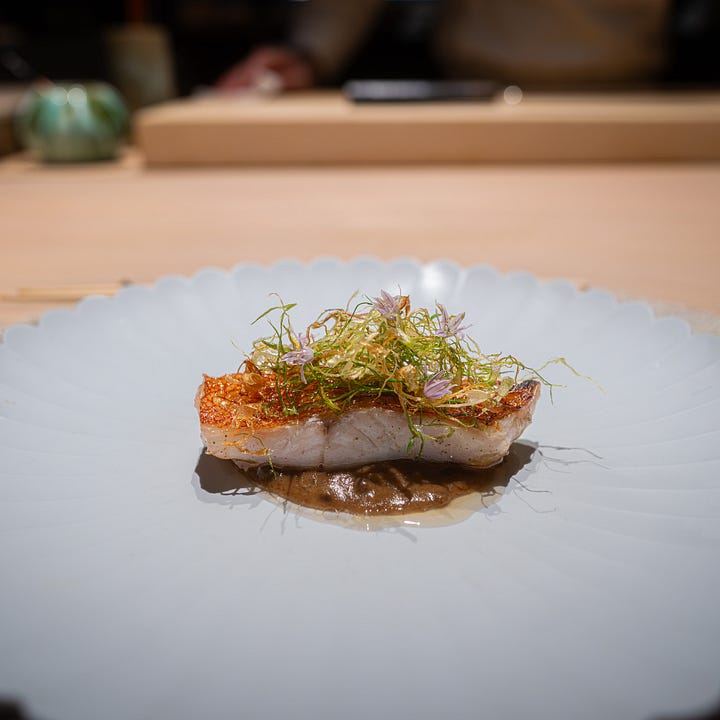

Now it’s nigiri time—each one a standout, with perfect quality and execution across the board. Not a single miss.
Shima Aji
Akami
Amebi
Kasugo
Kinmedai
Akamutsu

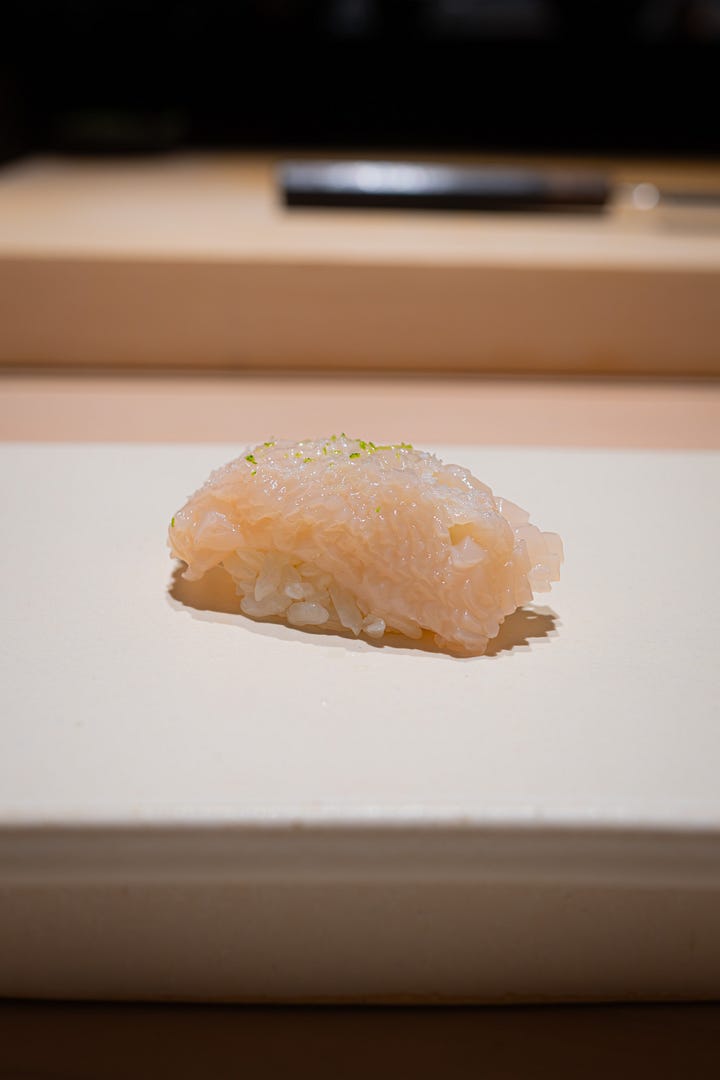
Hotate with Lime & Salt: Possibly one of the best we’ve had. Bright, creamy, a perfect bite.
Chu Toro
Uni & Caviar: No notes. Just bliss.
Maitake with Truffle Sauce: Savory, juicy, and perfectly grilled.
Smoked Saba: Subtle, aromatic, and full of character.
Anago: Smoky, sticky glaze, meaty finish.
Toro Hand Roll: Big, rich, buttery.
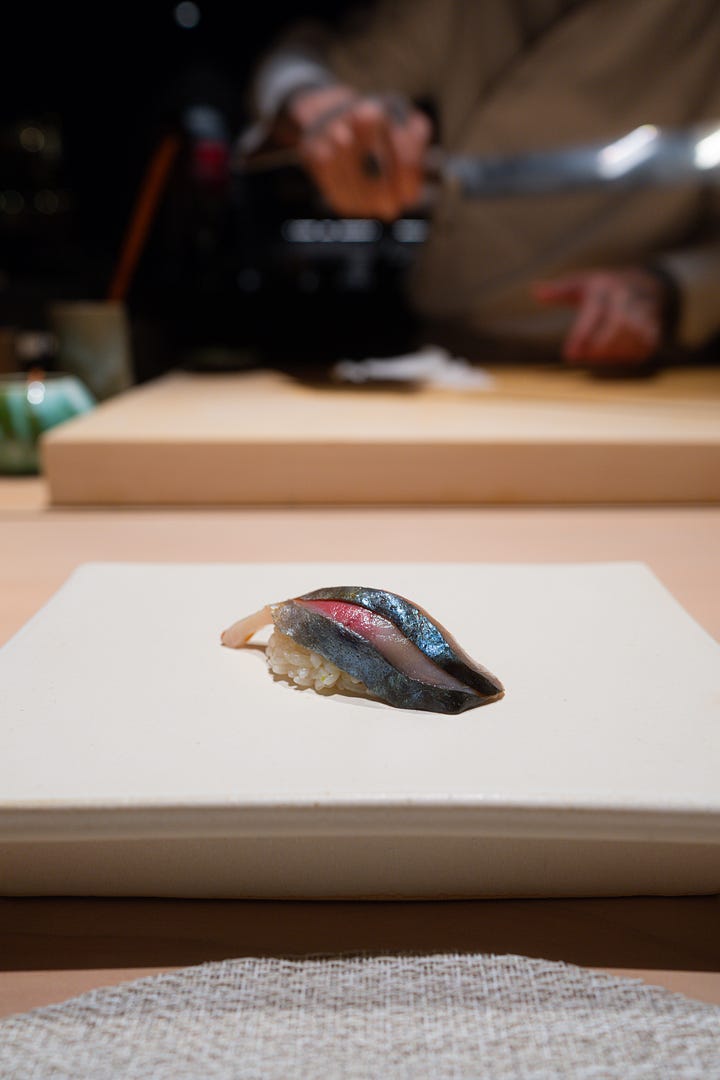
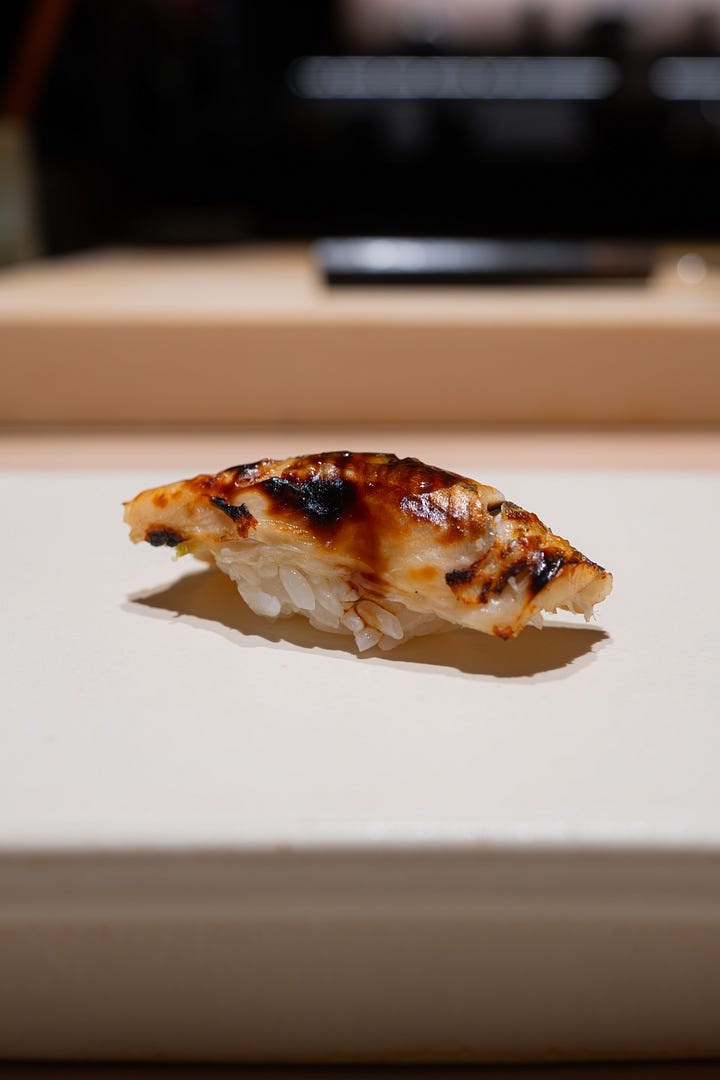
Dessert: Ended with musk melon and two ice creams: a mild green tea base with shaved truffle, and a vanilla ice cream topped and caviar. While super tasty, we wished for just a touch more wow to close out the meal.
All in all? Truly exceptional. If we lived in NYC, this would be a dangerous addiction.
Beverage Program – 9/10
We went with the Reserve Pairing, and it was exceptional—elegant, balanced, and thoughtfully matched throughout the meal. A mix of sake, wine, and champagne that elevated the experience without overpowering it.
Krug 171ème Édition – Toasted brioche, citrus zest, and a hint of hazelnut. Bold but refined.
Kikuhime Yamahai Ginjo Genshu – Rich, earthy, with ripe banana and rice pudding notes.
Domaine du Pélican Pinot Noir 2020 – Light, earthy, with soft cherry and mineral tones.
Miyosakae Tenmi Junmai Daiginjo – Clean and floral, with white peach and melon.
Maboroshi Junmai Daiginjo – Crisp, light, with subtle pear and green apple.
Fanny Sabre Clos des Renardes 2020 – Silky, red berry-driven with a whisper of spice.
We’re not frequent sake drinkers, but every pour felt exceptionally curated. A luxurious pairing that matched Joji’s quiet opulence perfectly!
Service –17/20
With a small team comes a more intimate rhythm. There’s always someone keeping an eye on the room, ready to step in before you even realize you need them.
Staff are professional and discreet—hardly chatty, but present… allowing the chef to be centre stage. Chairs pulled out before you even stand up. Warm smiles from the kitchen team. Quiet jokes shared between courses from the Som.
Simple, elegant service that respects the room’s tone.
Sustainability – 2/5
This isn’t a restaurant focused on sustainability—and that’s understood. Some restaurants strive for hyper-local, zero-waste programs. Others aim to bring the very best ingredients from around the world.
Jōji falls into the latter. From Hokkaido uni to Japanese kinmedai, they’re sourcing world-class ingredients you’d rarely find outside Japan. It’s a luxury—and it tastes like it.
Wow Factor – 4.5/5
Jōji feels quietly opulent. Like being part of an in-the-know NYC secret.
Everything from the design to the ingredient quality has an understated “if you know, you know” vibe that’s hard to describe… and even harder to forget.
Overall Value – 8/10
Yes, it’s very expensive—but the experience delivers. From the craftsmanship to the ingredient quality, it all feels considered. You walk away feeling like you just took part in something special.
Cost Breakdown:
Lunch: $295
Dinner: $410
Lunch Pairing: $195
Dinner Pairing: $275
Reserve Pairing: $450
Worth it? If you’re a sushi lover—absolutely.
Final S-Score: 86.5/100
This scores as an S2 meal, mainly due to sustainability and value (it is pricey). But if we’re talking purely about the "wow" and “yummy” factor? It’s nearly perfect. One of our top 10 restaurants in the world. Still. Even after all these meals.
If you're in New York and haven't been—make the time!
—
Thanks for reading! A Best of NYC ft. Chef Wayne is coming out next (Sunday, July 20th)… and ohhh man was the list good haha!
Big Hugs,
Laila & Adrian





